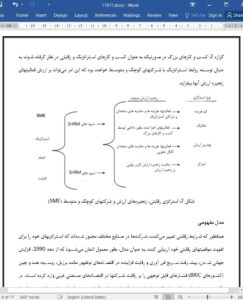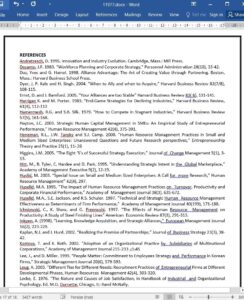ABSTRACT
The study of strategic alliances has focused primarily on alliances between large corporations and between large corporations and joint ventures. However, powerful strategic partnership and alliances between small and medium sized enterprises and big businesses are also critical to the ability of big business to develop and maintain sustainable competitive advantage. This paper lays out a conceptual framework for studying the relationship between the strategic human resource management practices of small and medium sized businesses and their performance as corporate partners, as industry and competitive conditions change.
INTRODUCTION
Strategic collaboration between small and medium sized enterprises (SMEs) and the large businesses they partner can take many forms, such as locating a SMEs facility in close proximity to a buyer’s facility to enable just-in-time delivery of raw material, inputs and components; collaborating on research and development and product design to build organizational competencies and capabilities; collaborating on supply chain activities to manage costs and promote operational efficiency; or delivering outsourced human resource management activities (Doz and Hamel 1998). For large businesses, forming strategic alliances and collaborative partnerships can be critical to their ability to seize technological opportunities, to build critical resource strengths and competitive capabilities, to improve supply chain efficiencies and deliver value to their customers (Kaplan and Hurd 2002). Often these partners are small and medium sized enterprises, that are expected to perform as full partners. Indeed many partnerships and alliance break when a partner is unable to meet its obligations under the partnership agreement (Ernst and Bamford 2005).











